Catalan Pyrenees


The Catalan Pyrenees correspond approximately to the eastern half of the Pyrenees mountain range. Because of its geography, between its steep cliffs and its high mountains stretch hundreds of lakes, waterfalls, charming towns, narrow valleys and many other jewels of nature that would cover a lifetime to know. This is the reason that forces us to choose carefully which parts of the beautiful Pyrenean natural landscape we want to explore since, talking about the surroundings of Barcelona, It is not a short distance that must be traveled to reach any of them.
- A look at the Aigüestortes National Park and San Mauricio Lake
The Aigüestortes and Lago de San Mauricio National Park is the only Spanish national park located in the autonomous community of Catalonia. It is located in the central part of the Pyrenees and divided into four regions: the Alta Ribagorza, the Pallars Sobirá, the Pallars Jussá and the Aran Valley, in the province of Lleida.There are two main forms of access; the oriental, by the town of Espot, town that bestows the famous lake of Saint Maurice, as well as a multitude of ideal areas for hiking: the Monestero Valley, the Portarró de Espot or a beautiful route that goes from the Refugio de Amitges to the top of Pico de Ratera; and the western, that of the Bohí Valley, that hides a treasure of Romanesque churches that well deserves a dedicated route. - Aran Valley
The northern area of the national park is made up of the Aran Valley, a natural paradise with really charming towns like Artíes, Vielha, Salardú, Bagergue or Bossóst, perfect for a route by car. What's more, it is impossible to resist walking along any of its many trails, like the one that rises from the Restanca Lake to the Sea Lake or the one that crowns the top of Montcorbison.
Bages region
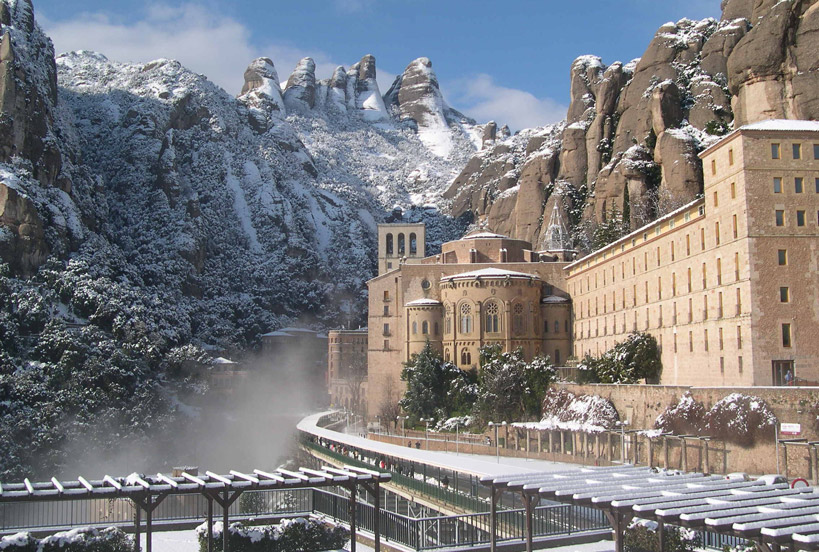
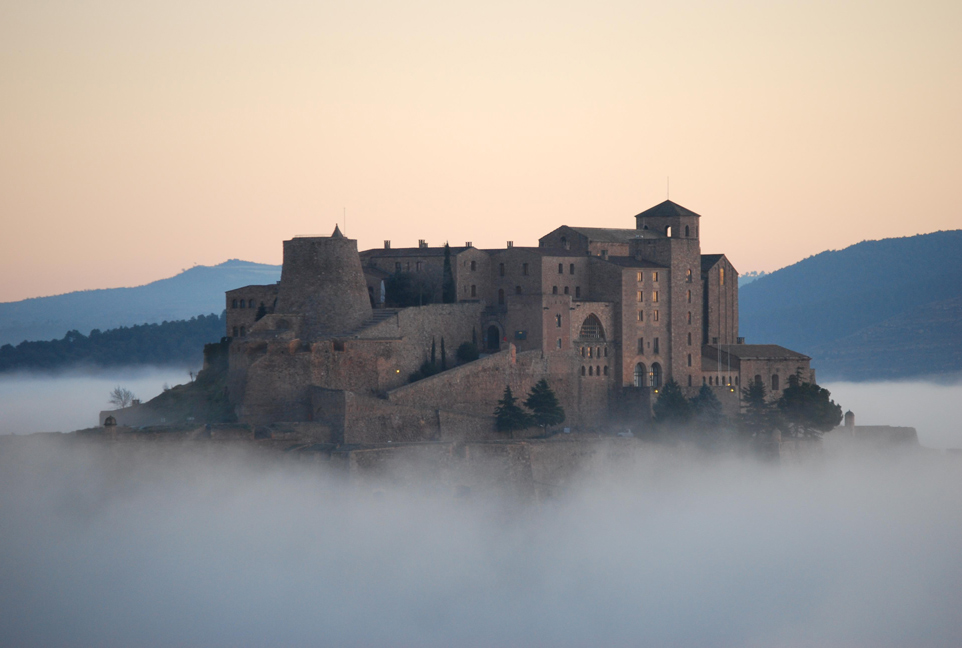
- Monastery of Montserrat
The monastery of Santa María de Montserrat is a Benedictine abbey located in the heart of the Montserrat mountain. It is a symbol of Catalonia, a pilgrimage point for believers and a must for tourists visiting the area. The views provided by the natural enclave in which it is located justify the number of visitors it receives per year, more of 2,5 millions of people. And it is that just doing an excursion through the massif on whose slopes the monastery rests is already very worthwhile. Usually, it is a place of great scenic interest, as historical and religious, since its legend begins with the discovery of the Virgin of Montserrat around the year 880. - Cardona
Cardona is a small municipality with a great history. Its impregnable castle was one of the most important in medieval history, and if his mere vision at the top of the hill dazzles, Accessing and exploring the interior will make any visitor fall in love. It was built in the 9th century to defend economic interests on the exploitation of the famous salt mountain of Cardona. Among its attractions, the Torre de la Minyona stands out, the parade ground, the Collegiate Church of San Vicente or the casemate, old powder magazine that was built already in modern times. The salt mines of Cardona, equally impressive inside and out, require a visit to contemplate its tunnels and spectacular formations. - Mura
The narrow streets and houses with stone walls embedded in one another or the vegetation that covers them give the town of Mura a special aesthetic that has stopped time in the middle of the Middle Ages.. No more is needed to attract visitors, armed with cameras, for a walk around the village in order to find its hidden treasures: the Romanesque style church of Sant Martí, the hotel chiseled in the rock of Puig de la Balma, the waters of the Gorg del Pare or the Fountain of the Era or the Hermitage of Sant Antoni.
Destination Sitges
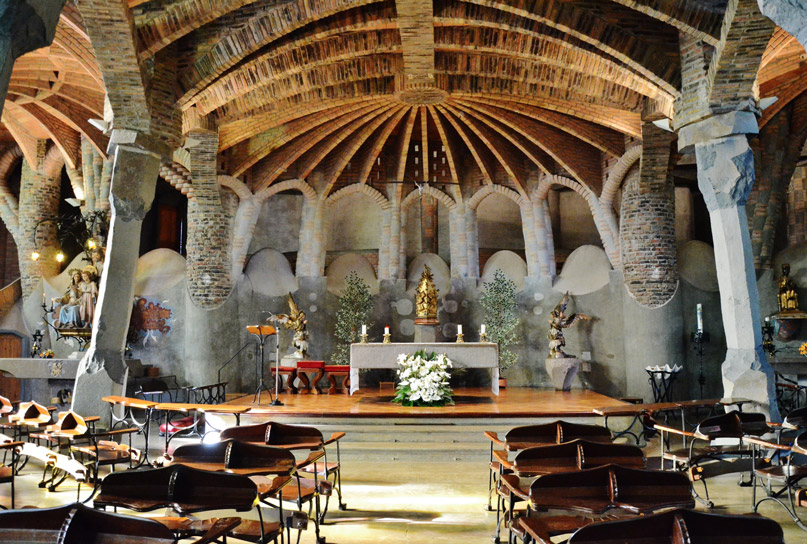
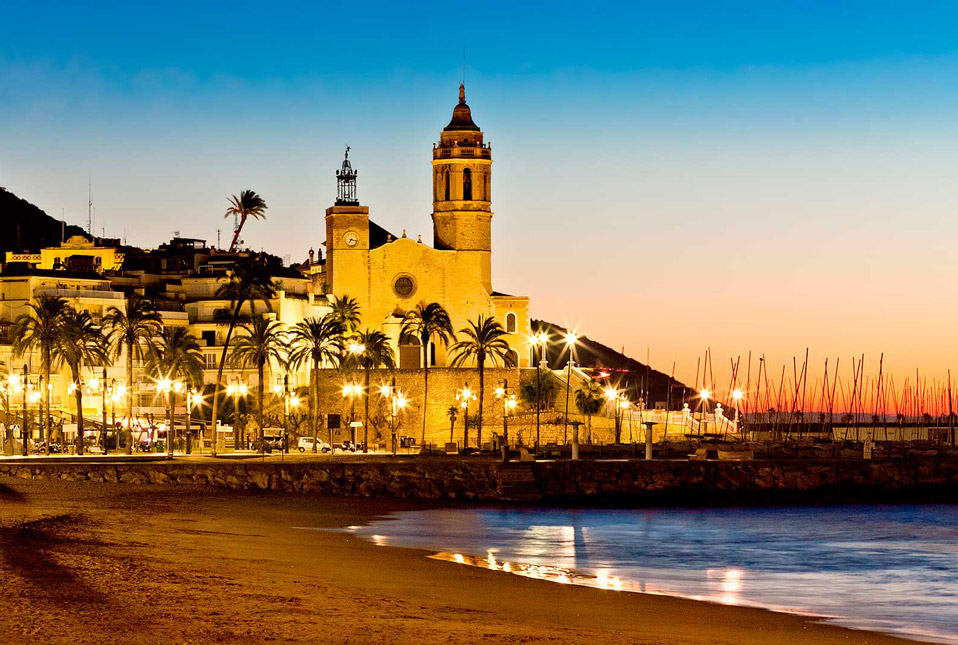
If travelers decide to depart from Barcelona to the charismatic and versatile city of Sitges, a 40 km southwest, We suggest before making a stop that will delight every art lover, of architecture and, usually, of Antoni Gaudí's work.
- Crypt of Colonia Güell
The crypt of Colonia Güell was built between 1898 Y 1914 as a religious building for the workers who lived in Santa Coloma de Cervelló. This place is considered one of the benchmarks to study the architecture of Antoni Gaudí, but also as one of the most important modernist complexes and tourist attractions in Catalonia. It stands out for having a good sample of this style applied to the field of civil and industrial architecture., in an effort to endow it with social and cultural value, thanks to the use of exposed brick as a vindication of a popular architecture, but also to the incorporation of new techniques and materials such as iron or ceramics. - Sitges
Sitges is a municipality located on the Mediterranean coast. Its economy is based on tourism and culture, counting on numerous hotel beds and events such as the Sitges Film Festival. The city is a significant LGTBI tourism destination, in addition to hosting congresses, conferences, seminars and business meetings Its infrastructure has facilities and three marinas, one of which - Port Ginesta - is the largest in Europe. Among its cultural events, Sitges remains as the headquarters of the International Film Festival, one of the most important in the continent. Its celebration of Carnival also has a multitude of activities that take place in the streets, residences and schools. In the same way, In June, the floats and Drag Queens parades of LGTBI pride take to the streets, that fill Sitges with shows, concerts and fireworks.
Ruta Rupit I Pruit – Besalú

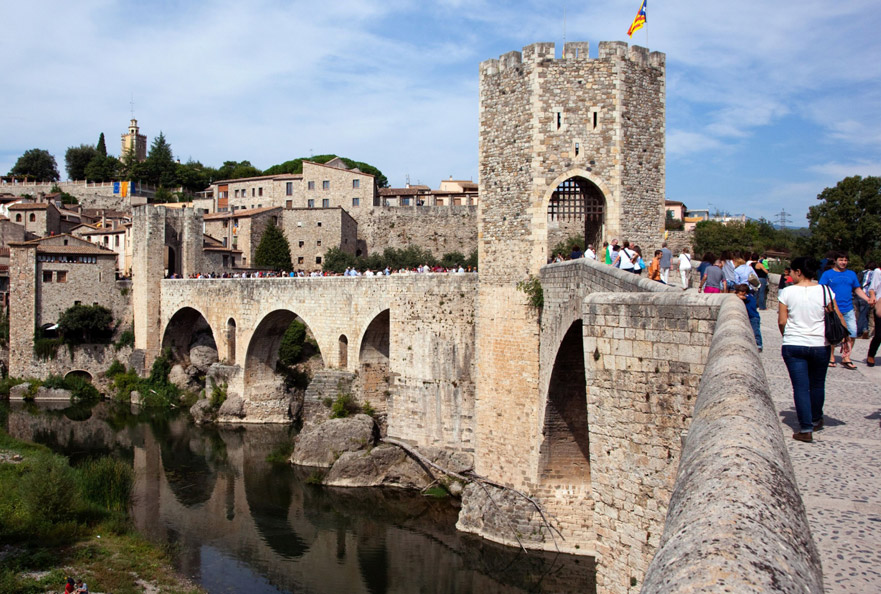
- Rupit i Pruit
The Barcelona municipality of Rupit and Pruït is located in the Osona region. With a great historical and artistic wealth and framed in a natural setting of great beauty, there are many things to see and do in this town. Rupit is located between wooded and lush landscapes of fir trees, abedules, holm oaks, oak and beech trees and strewn with charming stone houses dating from the 16th and 17th centuries. It is not allowed to access its streets by car, so its core can only be reached on foot, being the most interesting way to do it through its suspension bridge. Its tourist attractions include the baroque church of San Miguel, Carrer del Fossar and its small and ancient castle or the churches of Sant Andreu and Sant Llorenç Dosmunts. - Castellfollit de la Roca
One of the greatest attractions of Castellfollit de la Roca is its location: the town stands imposingly on a volcanic cliff more than fifty meters high by almost a kilometer in length. Nevertheless, its built old town does not fall short, from end to end, with stones and basalt rocks, your viewpoint, its clock tower or the church of San Salvador, dating from the thirteenth century and allows you to ascend to its tower. - Besalú
Walking through the streets of Besalú on any given afternoon makes it easy to understand why this medieval town attracts so much attraction. The best way to start the journey through the town is by accessing the historic center through its famous medieval bridge with seven arches and almost one hundred and fifty meters in length. After passing under his second door, the traveler will find himself directly in the narrow streets of the town, surrounded by craft and souvenir shops. The half-timbered streets of the old Jewish quarter hide stone porticoes and some baths discovered in the place where there was a small factory and where it was determined that a synagogue existed.. What's more, The church of Sant Pere or the museum of miniatures arouses great interest.
Girona and Cadaqués
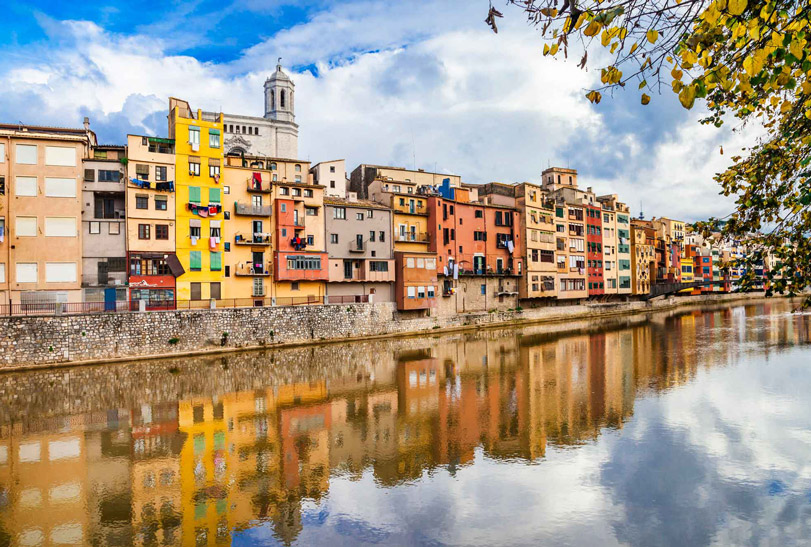
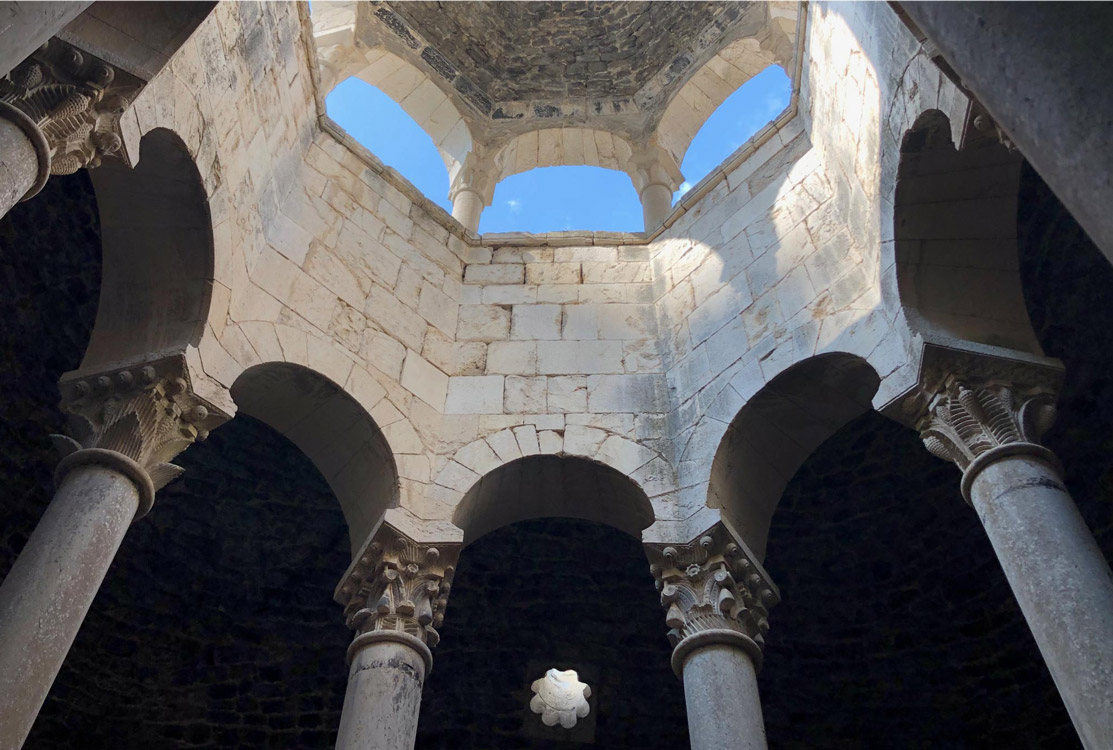
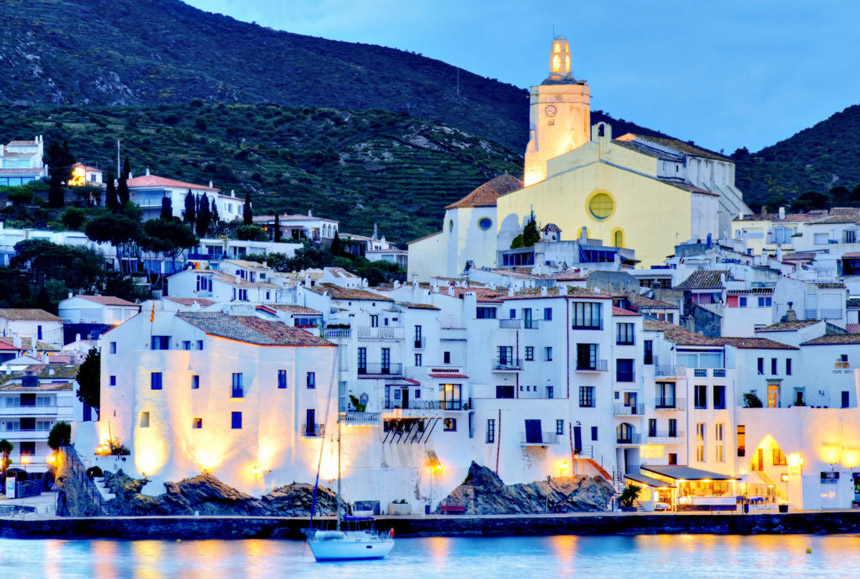
Girona
Girona is a city of Roman origin that, with its more than 2.000 years of antiguaty, fall in love with its cobbled streets among which jewels such as the Jewish quarter or the magnificent cathedral stand out. What's more, In it, visitors will be able to enjoy a first-class gastronomy, patent in places like the incredible Celler de Can Roca, several times selected as the best restaurant in the world. Following, We mention five places whose visit is essential in a visit to this Catalan capital.
- The Houses of the Onyar
These houses with brightly colored facades that are hanging over the stretch of the Onyar river that runs through the old part of the city are one of the most beautiful places to visit in Girona. - Cathedral
One of the best things to do in Girona is to climb the 90 steps of the impressive Baroque-style staircase that lead you to the fantastic Cathedral. After observing the facade and the views you can enter its interior and contemplate the Gothic nave, considered the widest in the world in its style. - The Call
It is the best preserved Jewish quarter in all of Europe and one of the essential places to visit in Girona. Among its cobbled streets and its beautiful courtyards lived one of the most important Jewish communities in all of Europe until its expulsion in 1492. - The Arab Baths
It is a Romanesque construction from the 12th century. It highlights a room with a central pool surrounded by eight beautiful columns with richly decorated capitals that support a dome. - The Wall
The border and strategic position of the city of Girona required, since its inception, of the construction of a defensive wall with several turrets. The first wall was built during Roman times in the 1st century BC.. and it was expanding in later ages, until in the Middle Ages a promenade was created that allowed walking through its upper part. A large section of this wall has been preserved and offers fantastic views of the city and its surroundings.
Cadaqués
The beauty of this small town on the Costa Brava lies in that it is a reserved place, shy, endearing, crouched between the mountains, that resisted the tourist boom of the Spanish coast. To get there, you have to travel fifteen kilometers of zigzagging road that goes up and then down until you reach Cadaqués, and that represent the prelude to a day that travelers will have to savor slowly: have breakfast in front of the beach, wander the steep narrow streets and squares until you reach the church and take in the splendid view of the bay, take a dip in one of its endless beaches, walk the old road ...
Wine tourism in the Penedés
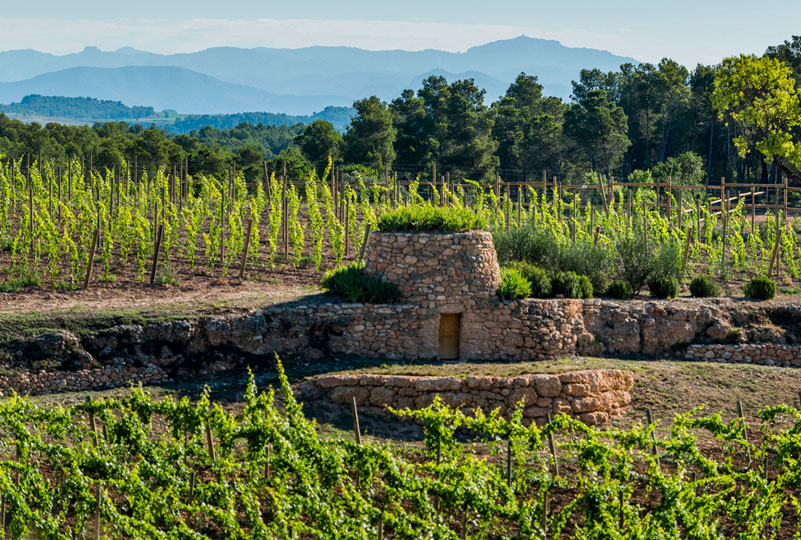
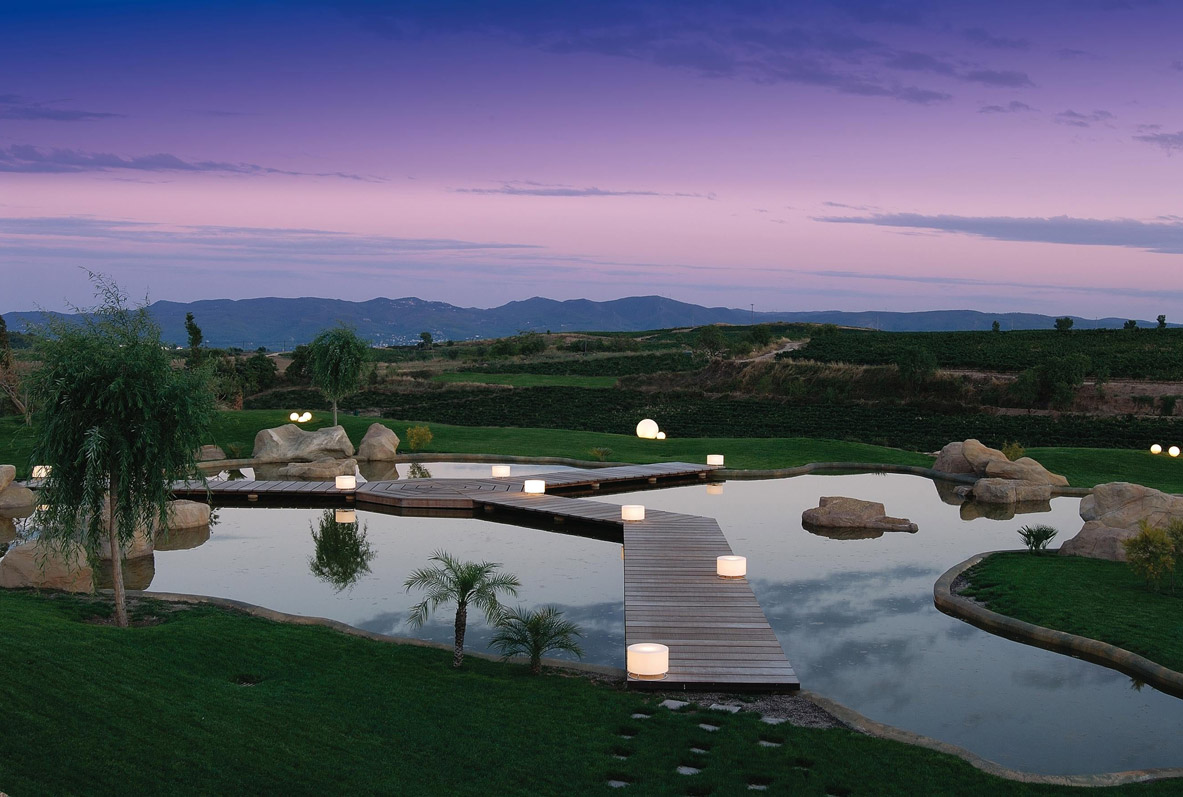
The Penedés region, located between Barcelona and Tarragona, has several vineyards a few kilometers from the sea. Its mild and warm Mediterranean climate regulates soil temperatures throughout the year. Within the region there is a great diversity of microclimates and a variety of altitudes. Perhaps the most pleasant time to practice wine tourism is spring, where visiting any of these wineries will delight tourists.
- Gramona
Produces prestigious sparkling wines. The best thing about this winery is walking through its vineyards and forests glass in hand, or practice a yoga session with views of the Montserrat mountain. - Finca Viladellops
Recently renovated, its peculiarity lies in a beautiful town converted into a vineyard. - Parès Baltà
It is one of the wineries that is part of the Carretera del Vi. It is a fantastic project with historical and cultural value that they show through an electric car route. The route connects the Penedés vineyards with the beach following the old paths of the region. - Can Bonastre Wine Resort
In this winery the organic cavas of AT Roca are also made, so that with one visit you can enjoy two tastings. And the best of the property: excellent cuisine and a spa with stunning views of Montserrat. - lopart
A classic in the Penedés region, that makes some of the best sparkling wines in this region. It is a historic estate that has a strong family tradition and excellently cared for vineyards.